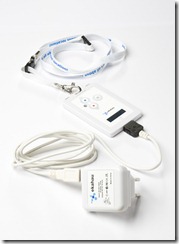I have been talking by e-mail to Mika Kouhia from Ekahau about the use of their WiFi-based real-time location technology in the typical home or small-business network. The applications that may come to mind here will typically cover an emergency-response / nurse-call system that is an integral part of the at-home care of elderly, infirm or convalescing people; or small businesses, especially those who are partners to large business, who need to track assets in a similar manner to what is done by large organisations.
What is the main complication that concerns the Ekahau Real-Time Location System
The main complication that limits this technology is the fact that most of the wireless networks deployed in this space only have one access point, typically the one that is integrated in to a wireless router. You may be lucky to use this technology on a wireless network that has an extra access point such as a wireless router that is repurposed as an extension access point and connected to the main router via a HomePlug powerline link or one of those access points that work with a HomePlug powerline backbone. On the other hand, you would have to deploy “infrared beacons” around the premises and rely on the Wi-Fi wireless link provided by the router as primarily a communications link.
The infrared beacons work on a similar infrared frequency to the remote controls used to control the majority of TV sets and other consumer-electronics devices in circulation. Thus they won’t interfere with the passive-infrared sensors used in most security systems or automatic “sensor-light” setups because these sensors are tuned to an infrared frequency emitted as part of body heat.
The primary reason for implementing the technology in the home

The primary implementation that I was talking about with Mika was to use their T301BD Wi-Fi Pager Tag which hangs around the neck of a person. This tag has an integrated display and two function buttons that also work as emergency-call buttons. As well, if the tag is pulled on the neckstrap, it can initiate an emergency response. The tag supports direct paging with push-button response, which can allow it to work with a “response-check” setup where if the user doesn’t respond within a certain time to a call, the system initiates emergency action. The display could come in handy by showing the person’s name, which would be a good help with people who have memory-loss disorders.
In this implementation, there may be the need to establish Internet access to the pager tag in order to permit this device to work as part of a solution provided by an external service provider. This may involve use of hardware or software on the network that provides at least dynamic DNS functionality and integration with UPnP IGD-enabled routers to provide access to the tag. The functionality could be extended to provide local nurse-call functionality with in-house location display through a local screen and / or Web page available through the home network.
Similarly, the pager tag could work with other technology to assist people who have memory-loss disorders by enabling the use of electronically-generated “reminder screens” for particular tasks. This is relevant to an article that I wrote about in my blog concerning technology that is to assist the elderly in their daily lives. Here, I had talked about a kitchen equipped with various technologies like pico-projection systems, RFID and Wii-style motion sensors to provide reminders through different food-preparation tasks.
How this could be taken further
Ekahau should then consider studying this application as a technology that suits the current home-driven health-care direction.
Here, we are dealing with an older population as people of the baby boom move in to the later years of life and more people live longer. As well, there is more emphasis on home-based health-care so as to provide patients with the dignity of being looked after in their own home environment. This also includes an emphasis on independent living for elderly people, including having younger relatives be part of the older person’s life in a support role.
Similarly, there are disabled or chronically-ill people who want to be in the familiarity of their own home and family and these people can be able to work as carers, whether alone or alongside paid staff members who work on a rostered system.
The supporting software could be integrated in to computing devices that work on any of the common desktop-computing, handheld-computing, set-top box or embedded-device platforms in order to establish an assistive-technology ecosystem in the home.

 I had
I had 